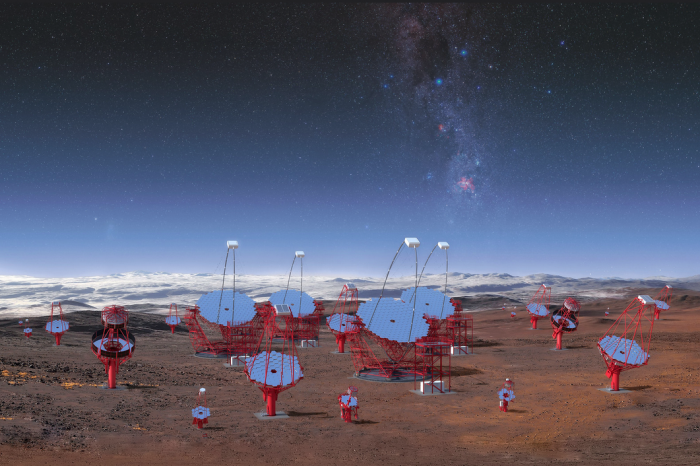RNDr. Petr Trávníček, Ph.D.
RNDr. Martina Boháčová, Ph.D.
Marta Rážová
The activities of the department focus on experimental astroparticle physics and they cover ultra-high energy cosmic rays, high energy photons from space, dark energy and dark matter. A significant part of the activities covers the instrumentation for atmospheric calibrations for astroparticle physics experiments. The attractive international projects continue enticing new students especially from Charles University, Palacky University, the Czech Technical University. The department closely collaborates with the Joint Laboratory of Optics of Palacky University and the Institute of Physics CAS (Olomouc).
Members of the department have helped to design, build, operate and analyze data from the Pierre Auger Observatory in Argentina (https://www.auger.org/), Cherenkov Telescope Array (CTA) at Canarian Islands and in Chile (https://www.cta-observatory.org/) and Large Synoptic Survey Telescope (LSST) in Chile (https://www.lsst.org/ ). In all of those international projects, the department scientists assumed responsibility for specific tasks, such as the operation of fluorescence telescopes and the development of the test bench of new electronics for the Pierre Auger Observatory, testing of photosensors for LSST or atmospheric monitoring and observation scheduling for CTA.
The department also operates two laboratories located in the Institute – the laboratory of astroparticle physics used currently for testing of electronics for the Pierre Auger Observatory and the laboratory for testing and development of astronomical optical sensors used e.g. in the framework of LSST. Other department activities concern design analysis of future cosmic ray detectors. Based on this experience, the Institute recently joined the newly established international effort to design the Southern Wide-field-of-view Gamma Ray Observatory (SWGO - https://www.swgo.org/ ).
What concerns the highest level data analysis, scientists in the department attempt to understand how the properties of hadronic interactions taking place during the shower development influence the shower properties, and which sources and processes are responsible for the origin of high-energy cosmic particles, and how these particles propagate through the universe to the Earth. This includes detailed analysis of shower content especially focusing on the muon component of cosmic ray showers, studies of cosmic ray composition and arrival directions. Another important topic covers the analysis of images from modern Cherenkov telescopes including CTA prototypes in order to establish novel methods for gamma hadron separation.


